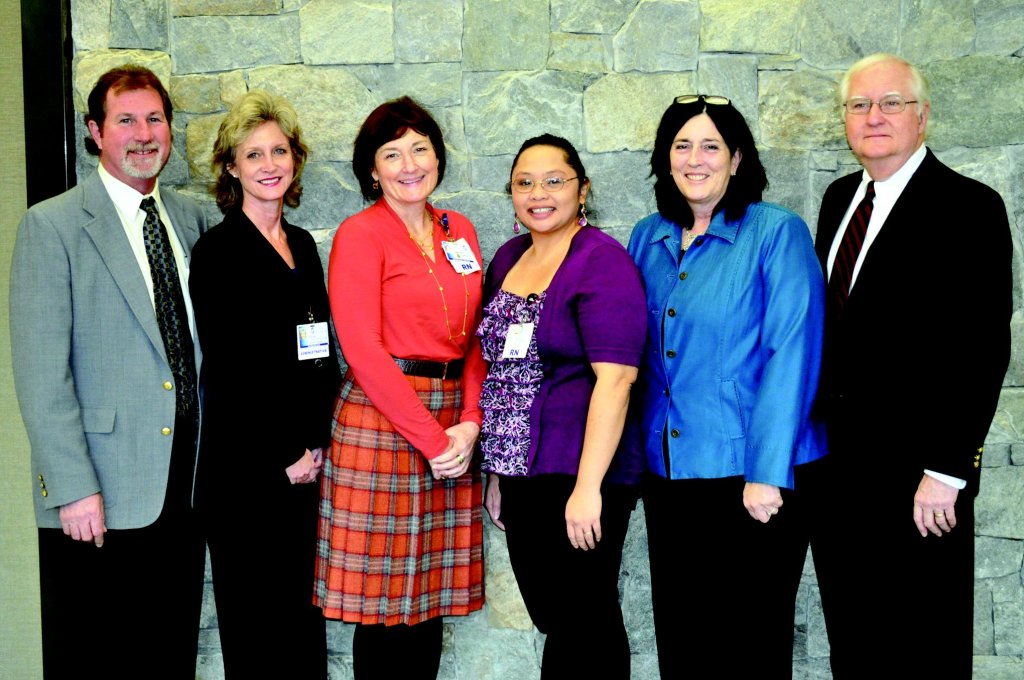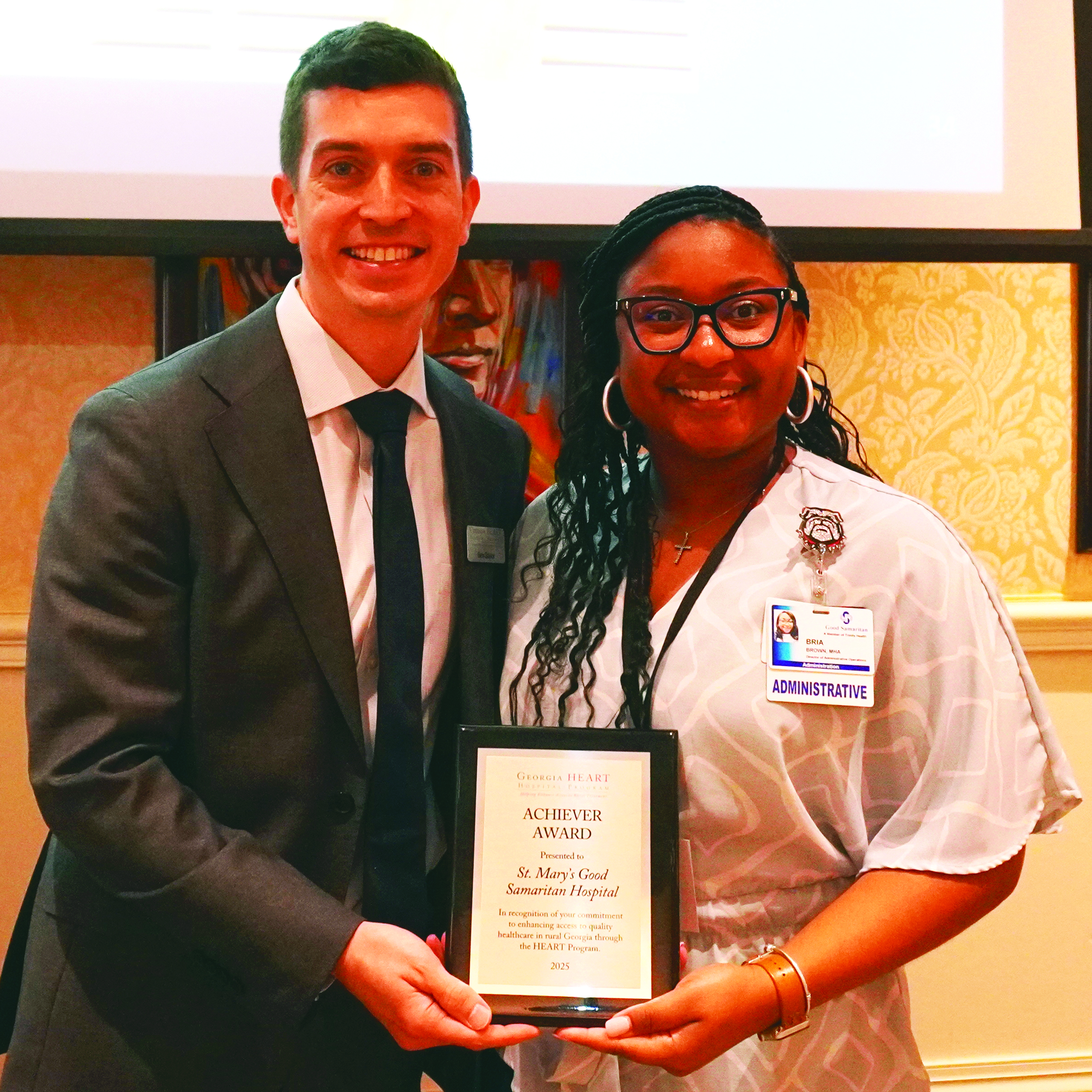St. Mary’s Good Samaritan designated Georgia’s first remote stroke center
Published 4:00 pm Thursday, January 16, 2014

- Key leaders in the effort to get St. Mary’s Good Samaritan Hospital designated as Georgia’s first Remote Treatment Stroke Center include, from left to right, Chris Threlkeld, EMT-P, Region 10 EMS Program Director; Celia Covington, RN, GSH Director of Nursing; Shelley Nichols, RN, St. Mary’s Director of Clinical Education; Joanne Lockamy, RN, St. Mary’s Stroke Coordinator; Beth Watkins, RN, GSH Emergency Department Manager; and H. McCord Smith, M.D., vascular neurologist and neurohospitalist.
St. Mary’s Good Samaritan Hospital has been designated as Georgia’s first Remote Treatment Stroke Center by the Georgia Department of Public Health Office of EMS/Trauma.
The designation recognizes Good Samaritan’s quality care for stroke patients, including its partnership with St. Mary’s Hospital in Athens and Georgia Regents University in Augusta to provide state-of-the-art diagnostics and emergency treatment.
“The Department commends you and your staff for the commitment to excellence in stroke care that is being provided by your facility,” stated J. Patrick O’Neal, M.D., the Department of Public Health’s Director of Health Protection, in a letter announcing the designation. “Reducing the incidence and the impact of strokes on individuals in Georgia is exceedingly important, and is in keeping with Public Health’s desire to protect and improve the health and lives of individuals throughout our state.”
O’Neal went on to say, “You should take special pride in being the first hospital in Georgia to become officially designated as a Remote Treatment Stroke Center.”
“We are thrilled and honored to be designated as Georgia’s first Remote Treatment Stroke Center,” said Montez Carter, president of St. Mary’s Good Samaritan Hospital. “The certification process is demanding and highly detailed. I’m proud of our medical staff, hospital staff and our partners in EMS for their commitment to providing quality care for our patients and our community.”
“Our State Emergency Medical Services Office partnered with the Coverdell Acute Stroke Program several years ago to improve the transition of care for suspected cases of stroke from EMS response to hospital discharge,” said Chris Threlkeld, EMT-P, Region 10 EMS Program Director for the Georgia Office of EMS/Trauma. “When considering how to implement the final phase of the Coverdell Murphy Act by Designating Remote Treatment Stoke Centers, St. Mary’s was one of the first healthcare systems that was to be considered due to it being recognized for its commitment to excellent stroke treatment and care. We are very proud of the commitment that Good Samaritan Hospital has made in improving the care for citizens in this area.”
At Good Samaritan Hospital, Emergency Department physicians have instant access to stroke experts at St. Mary’s Hospital in Athens and GRU in Augusta through GRU’s REACH tele-stroke system. REACH combines secure audio and video technology with remote physician access to diagnostic scans and lab results. As a result, neurologists in Athens or Augusta can consult with physicians at Good Samaritan, review images and tests, and even talk to and examine the patient in real time. The system brings the full knowledge and skill level of board-certified neurologists to Good Samaritan 24 hours a day, seven days a week.
Using REACH, physicians at Good Samaritan are able to administer the clot-busting drug tPA. tPA — tissue plasminogen activator — is the only medication approved by the FDA for the treatment of acute ischemic stroke, but it can be administered only to patients who meet strict screening criteria, and must be given within three hours of the onset of symptoms.
“tPA is the most powerful tool we have in the treatment of ischemic stroke, and it can actually reduce or prevent damage to the brain,” said Celia Covington, Good Samaritan Hospital’s Director of Nursing. “It’s vital, however, that it be administered correctly and only to patients who meet rigorous safety guidelines. Our association with St. Mary’s and Georgia Regents University allows us to do that.”
In addition to the REACH telestroke system and tPA capabilities, Good Samaritan’s stroke services include:
- 64-slice CT scanning, providing highly detailed images of the brain in minutes to allow doctors to diagnose stroke and check for bleeding
- Cooperative stroke services with St. Mary’s Hospital in Athens, ranked by Healthgrades as one of America’s best 100 hospitals for stroke care three years in a row
- Partnerships with air and ground ambulance services for patients who require immediate transportation to a stroke specialty center
- Compassionate inpatient care with all-private inpatient rooms and telemetric monitoring throughout the hospital
- Complete rehabilitation services, including inpatient and outpatient physical, occupational and speech-language therapy
- A swing-bed program, allowing patients who need nursing care and extended rehabilitation services to receive the care they need close to home.
“You have become an integral part of a comprehensive and growing stroke care system throughout the state,” Dr. O’Neal concludes. “The Department applauds St. Mary’s Healthcare/Good Samaritan Hospital for this achievement and appreciates the contribution that you make to the health and well-being of Georgians, as well as to those visiting our state.”




